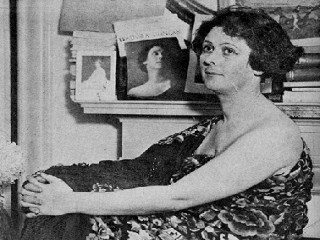
Isadora Duncan biography
Date of birth : 1878-05-27
Date of death : 1927-09-14
Birthplace : San Francisco, California, U.S.
Nationality : American
Category : Famous Figures
Last modified : 2011-06-30
Credited as : Dancer, modern dance,
Isadora Duncan was born Dora Angela Duncan on May 27, 1878, in San Francisco. By the age of 6 Isadora was teaching neighborhood children to wave their arms, and by 10 she had developed a new "system" of dance with her sister Elizabeth, based on improvisation and interpretation. With her mother as accompanist and her sister as partner, Isadora taught dance and performed for the San Francisco aristocracy.
The Duncans went to Chicago and New York to advance their dancing careers. Disheartened by their reception in eastern drawing rooms, they departed for London. In Europe, Duncan won recognition. She shocked, surprised, and excited her audience and became a member of the European intellectual avantgarde, returning triumphantly to America in 1908.
Duncan attacked the system of classical ballet, which was based on movement through convention, and rejected popular theatrical dance for its superficiality. She encouraged all movement that was natural, expressive, and spontaneous. Conventional dance costumes were discarded in favor of Greek tunics and no shoes to allow the greatest possible freedom of movement.
Experimenting with body movements, she concluded that all movements were derived from running, skipping, jumping, and standing. Dance was the "movement of the human body in harmony with the movements of the earth." Inspired by Greek art, the paintings of Sandro Botticelli, Walt Whitman's poems, the instinctual movements of children and animals, and great classical music, she did not dance to the music as much as she danced the music. For her, the body expressed thoughts and feelings; each dance was unique, each movement created out of the dancer's innermost feelings. Her dances were exclusively female, celebrating the beauty and holiness of the female body and reflecting the emergence of the "new woman" of this period.
After World War I Duncan traveled throughout Europe. Her first school (in Berlin, before the war) had collapsed for lack of funds. In 1921 she accepted the Soviet government's offer to establish a school in Moscow. But financial problems continued. Meanwhile, she married the poet Sergei Yesenin. When the couple came to America in 1924 at the height of the "Red scare," Duncan was criticized for her "Bolshevik" dances. Returning to Russia, her husband committed suicide.
By 1925 Duncan's life had been filled with tragedy. In 1913 her two illegitimate children had been accidently drowned; she had had a stillbirth; and she became disillusioned with the Soviet Union. She was famous but penniless. In 1927, while riding in an open sports car, her scarf caught in a wheel and she was strangled.
Isadora Duncan's death was mourned by many. She left no work that could be performed again, no school or teaching method, and few pupils, but with her new view of movement she had revolutionized dance.

















